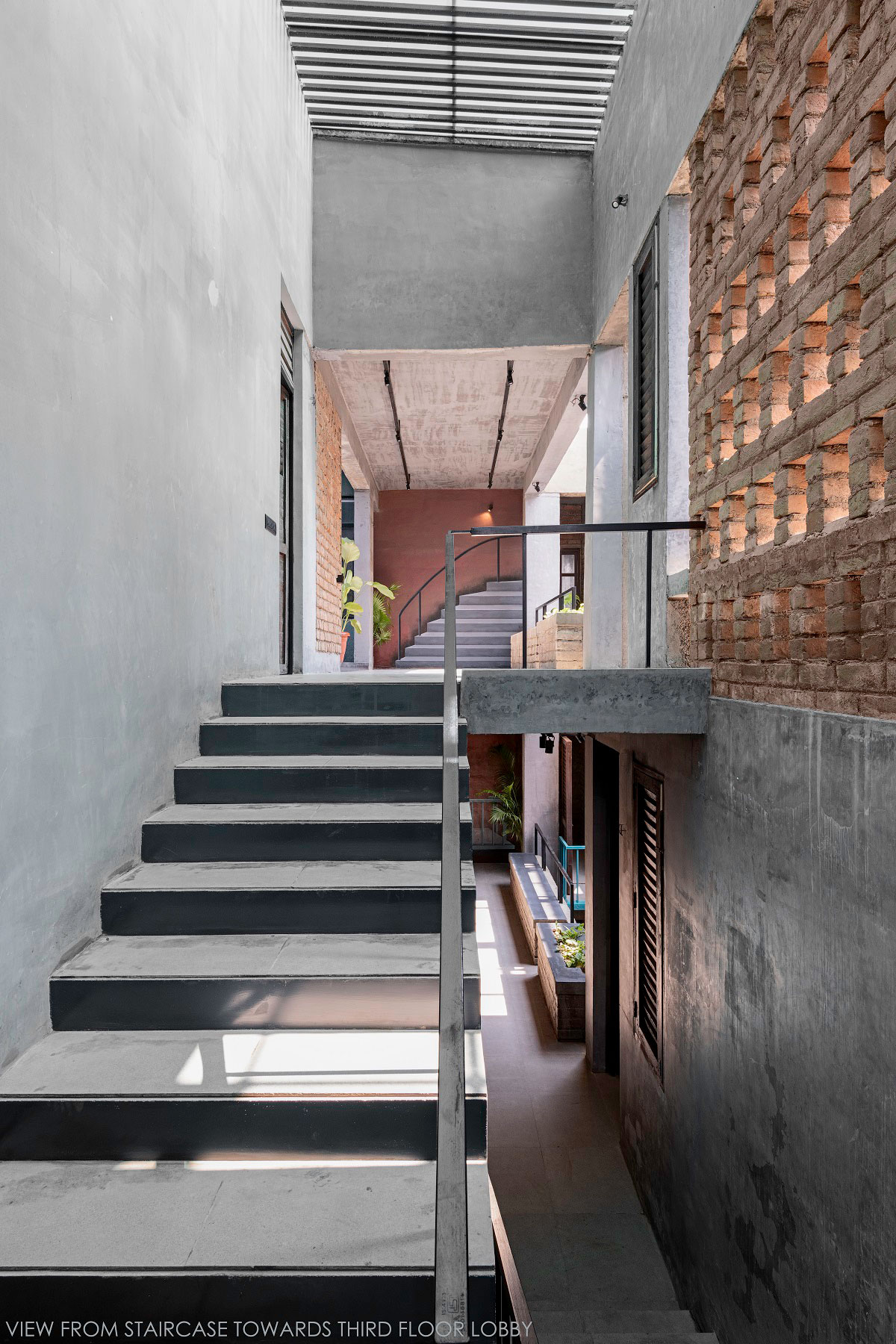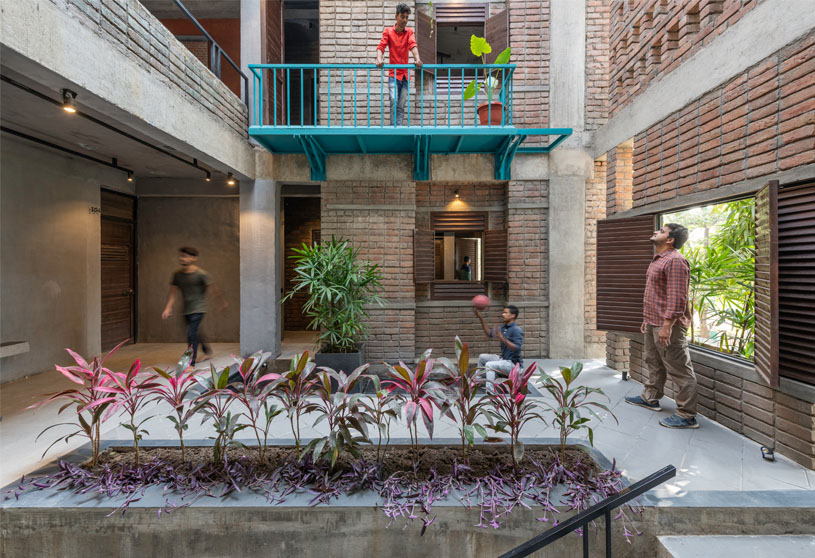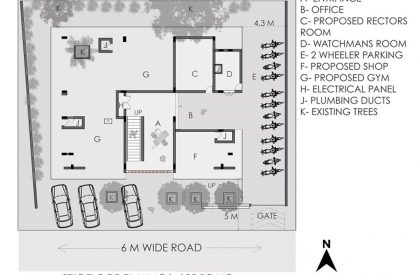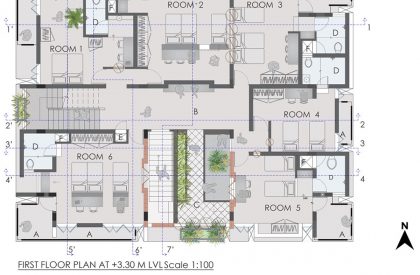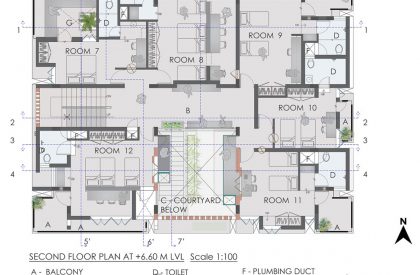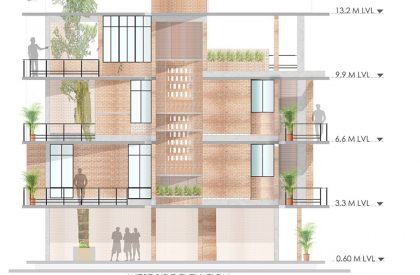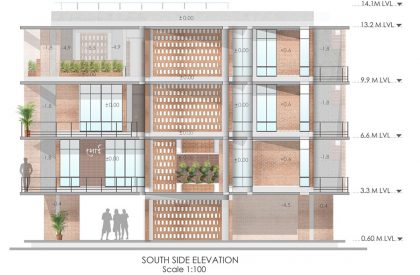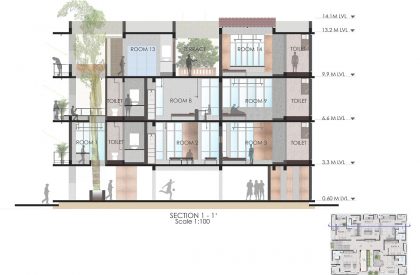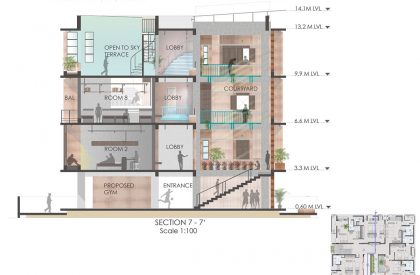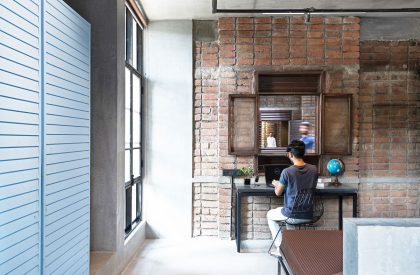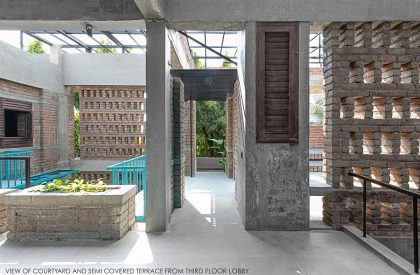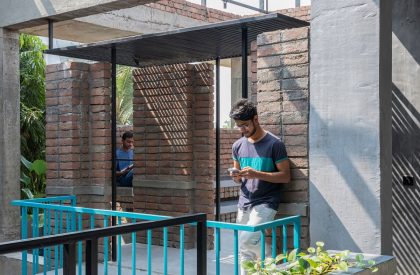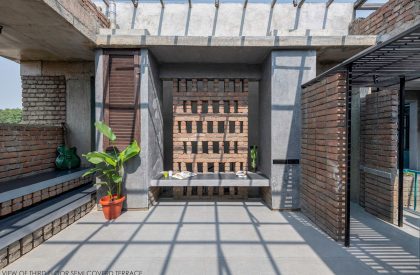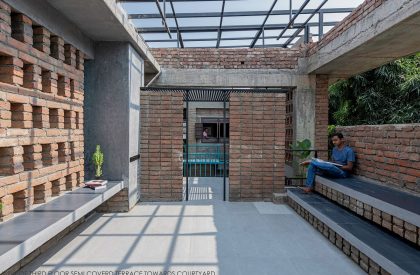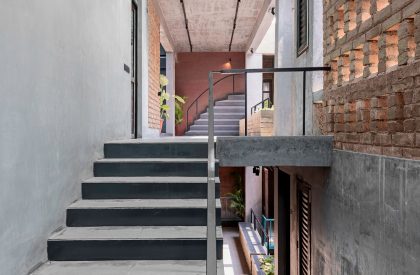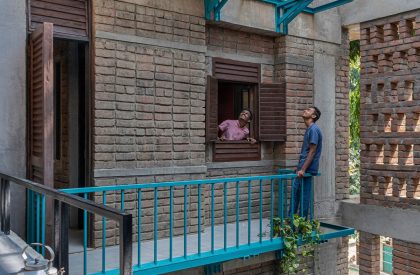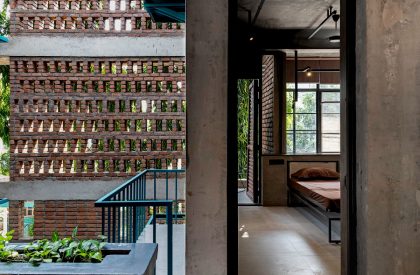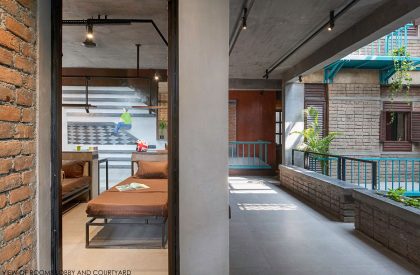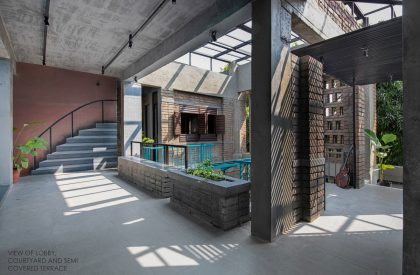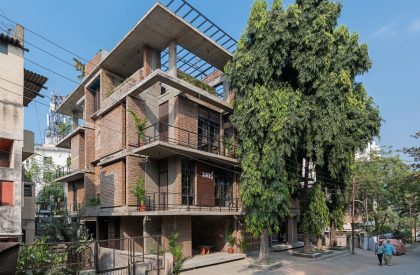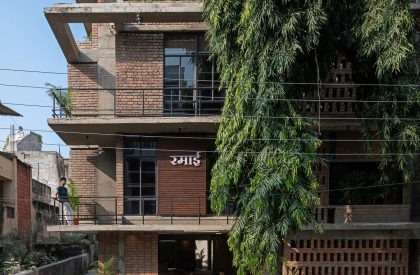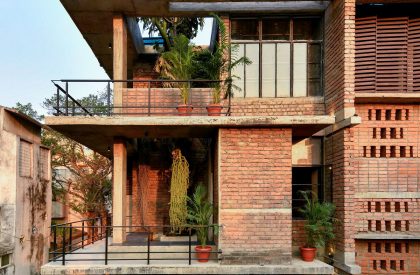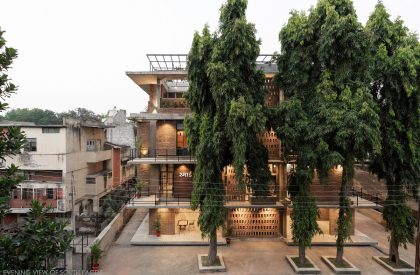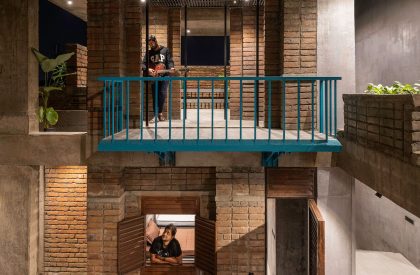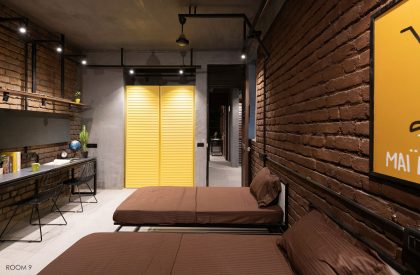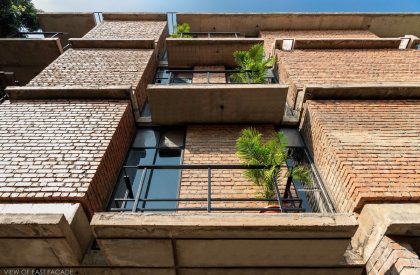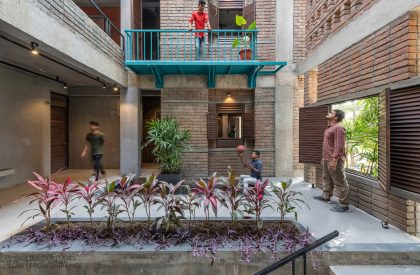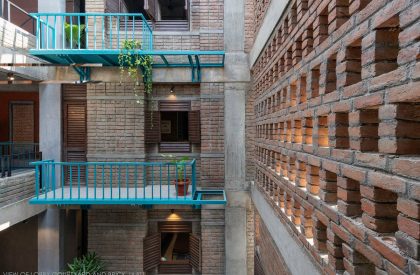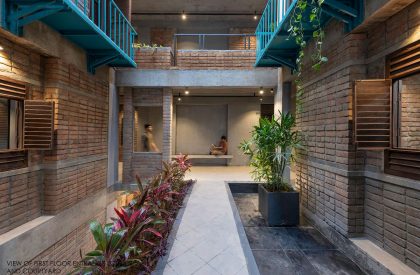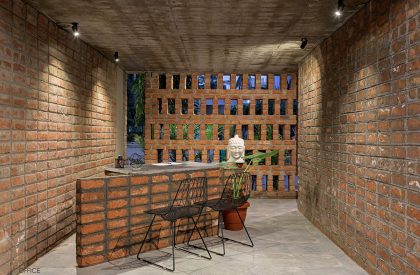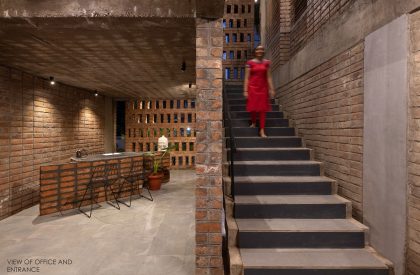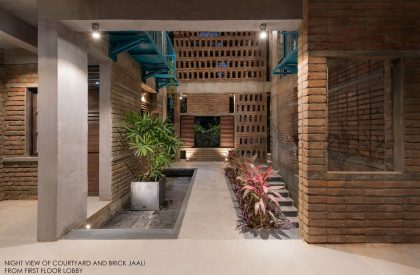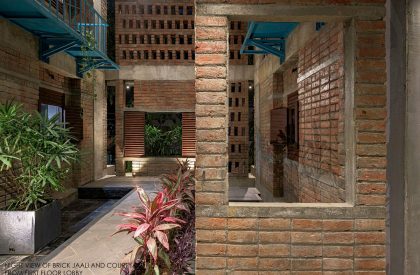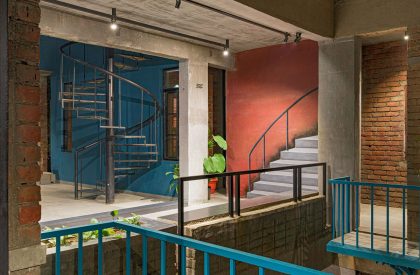Excerpt: Ramai boys hostel, designed by Amruta Daulatabadkar Architects, creates an interactive and inward-looking environment in a chaotic residential surrounding for the students to live in. The key factor in the design process was to enhance students interaction, within the indoor spaces that percolate outward and interact with the landscape around them. Planning has been made simple, by planning rooms and lobby overlooking the courtyard. And staircase connecting lobby on the x-axis, along with open terrace and courtyard on the y-axis.
Project description
[Text as submitted by architect]
Design Concept: To create an interactive and inward-looking environment in a chaotic residential surrounding for the students to live in. The key factor in the design process was to enhance students interaction, within the indoor spaces that percolate outward and interact with the landscape around them.
Site Characteristics: We were blessed with existing trees, four Ashoka trees on the south facade, Fishtail palm on the north-west side (which is sustained inside the building as per design), Almond tree on the north-west corner. All the above trees are sustained.
Client Brief: To design a boys hostel with maximum utilization of FSI for a commercial output and use of affordable material to make it cost-efficient was the only brief.
Spatial Orientation and planning: Planning has been made simple, by planning rooms and lobby overlooking the courtyard. And staircase connecting lobby on the x-axis, along with open terrace and courtyard on the y-axis.
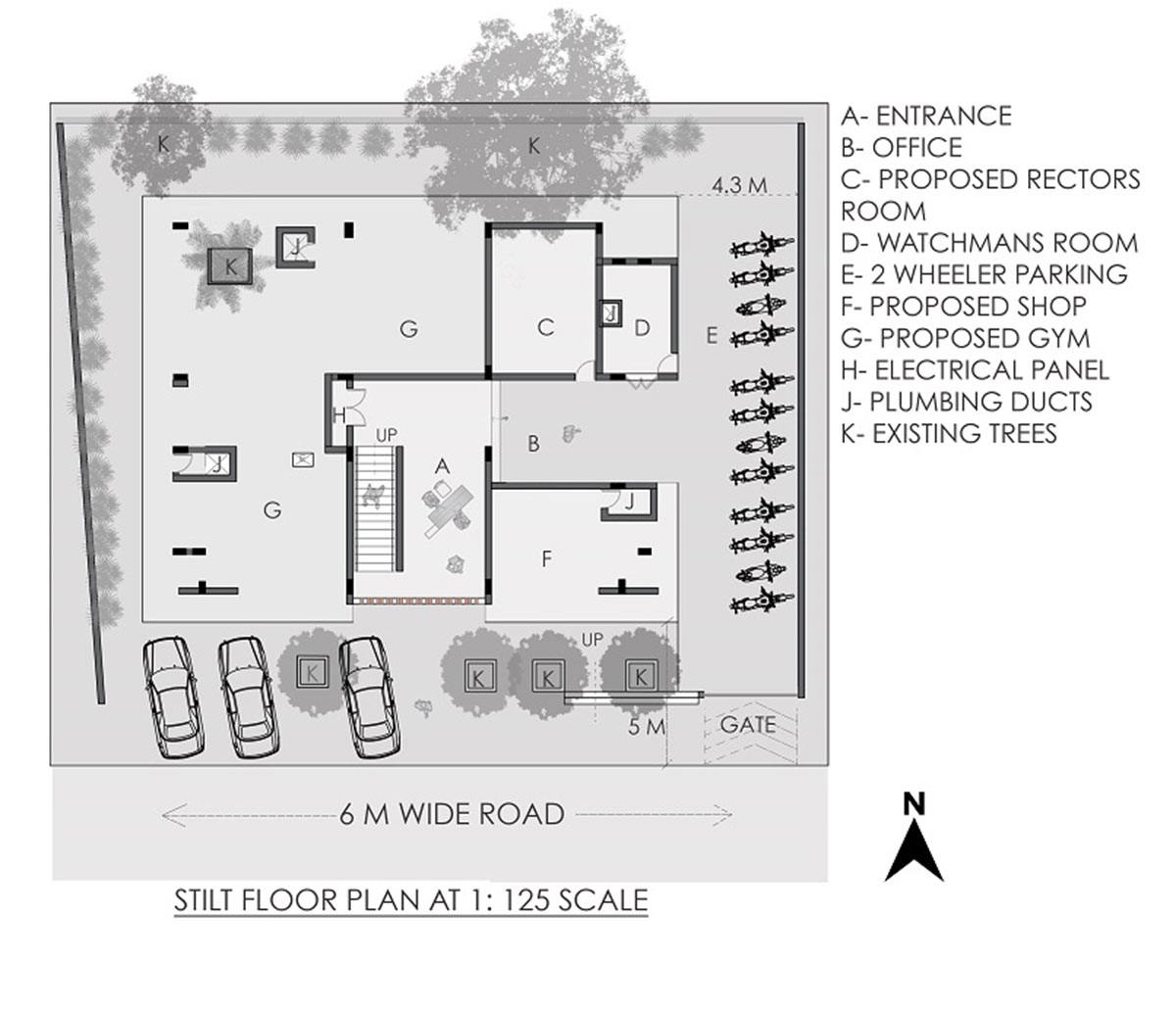


The Floor plate: The floor plate consists of the plinth, first, second and third level.
- Plinth- Entrance, office space, watchman room, proposed gym, shop and warden’s room.
- First floor- Courtyard, rooms
- Second floor- Rooms
- Third floor- Rooms, semi-covered terrace and open to sky terrace
By carving out small cutouts in similar floorplates from the first floor to terrace slab gives individual identity to the blocks. Shuffling of walls on similar floorplates creates unique layouts of rooms and provides various depths to all side facades. The fenestration of rooms is planned according to existing trees which act as a picture window or visual canvas in the rooms. The Jharokas overlook the courtyard and act as a great source of connectivity within the building. Every room is provided with a balcony overlooking the street as well as a few balconies that provide visual and vocal connection to the users.
The Courtyard: (The focal point of the building)
Courtyard brings in light and ventilation and creates a link between the indoors and the outdoors. It is the heart of the hostel which encircles the activities around it. Entrance, surrounding rooms, jharokhas and lobby spill out to the courtyard, creating a common living and interactive area in the centre. It is covered with a pivoted roof allowing a phenomenal amount of light and ventilation in the place. It is enveloped with a triple storey brick jaali on an external south façade serving as a source of airflow, illumination through jaali and provides thermal comfort.



Lobby: The only 8 ft wide lobby acts also as a passage on every floor. As shown in the plan entrance of all rooms doesn’t open in the lobby space but has a spillover space by shuffling of walls creating inbuilt seating spaces along with planters in the front of the lobby. It has different illustrative paintings finished with acrylic colours on every floor inspired from the elements of the building itself to create illusion and add on to the interiors and a surprise element for the users.
Existing Trees: The outdoor space attached to rooms has been carved out around the existing tree in the building for balcony and inbuilt seating. The existing trees give an edge to the building making it look primitive around the neighbourhood.
Interiors: Every room has a different interior layout. The wires running through 1 1/2 – 1 1/2’’ M.S Box sections are customized electrical design, also gets converted into ledges acting as book racks for study tables finished with Kadappa Stone. The play of colours in the wardrobes in rooms break the monotony of raw materials and provide uniqueness.
Material and colour palette: The project captures the gazes with its adornment of locally available clay bricks, whose design in its essence is the fruition of the local material to give a rustic effect. Use simple and locally available material such as – local made clay bricks, Deodar wood, vitrified tiles, Kadappa stone, M.S door frames and windows creates the building elevation and continues in interiors of the building, with the limit of the material like pop and gypsum. Use of basic material to envelope the building with the help of the local team, planning activities and rooms around the existing tree, minimal use of plastered walls, brick jaali, fenestration plan according to the surrounding trees helps connect inner outer spaces as well as existing trees acts as a visual canvas in the rooms and pours in light and ventilation in the building. Walls are treated with a single coat of putty and grey pigment and were scrubbed and finished with a transparent coat to get the concrete effect making it cost-efficient.
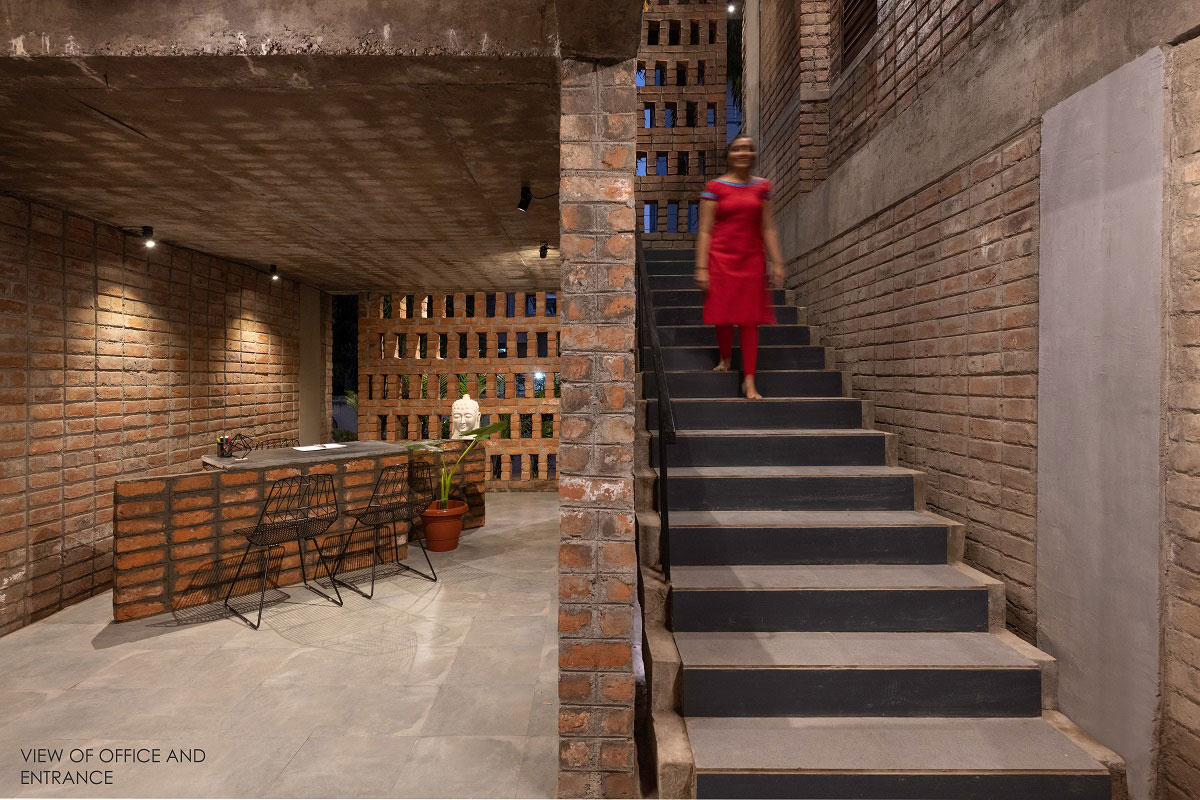

Furniture and accessories;
1) Pivot Windows– Centrally pivoted slit louvred windows in deodar wood are planned in between the rooms for user interaction.
2) Wooden Doors– Doors are made up of Deodar wood, which is a combination of fixed and openable louvres for visual and vocal connection. A fixed louvred ventilated panel with a concealed mosquito net is fixed with nails are installed above lintel level.
4) Wardrobes– The play of colours in the wardrobes in the rooms break the monotony of raw materials and provide uniqueness.
5) Study Tables- Study tables are customized on-site with ms legs and locally available Kadappa top.
6) Beds- Beds are customized on-site in ms box sections.
Other features:
1) Pivoted Roof– The courtyard with a centrally m.s pivoted roof helps in light and ventilation as well as in the common spaces.
2) Brick Jaali Wall– The Perforated brick jaali on the south facade allows natural airflow and ventilation.
3) Pergolas– The M.s pergola in semi-covered terrace, rooms and balconies help in a play of light and shadows.
4) Jharokas– Jharokas made of M.S section have a distinct colour and are finished with Vitrified Tiles on the floor to give a modern feel to the Courtyard.
5) Balcony– M.S Balcony railings act as Chajjas to the windows and pours in sunlight directly in the rooms.
